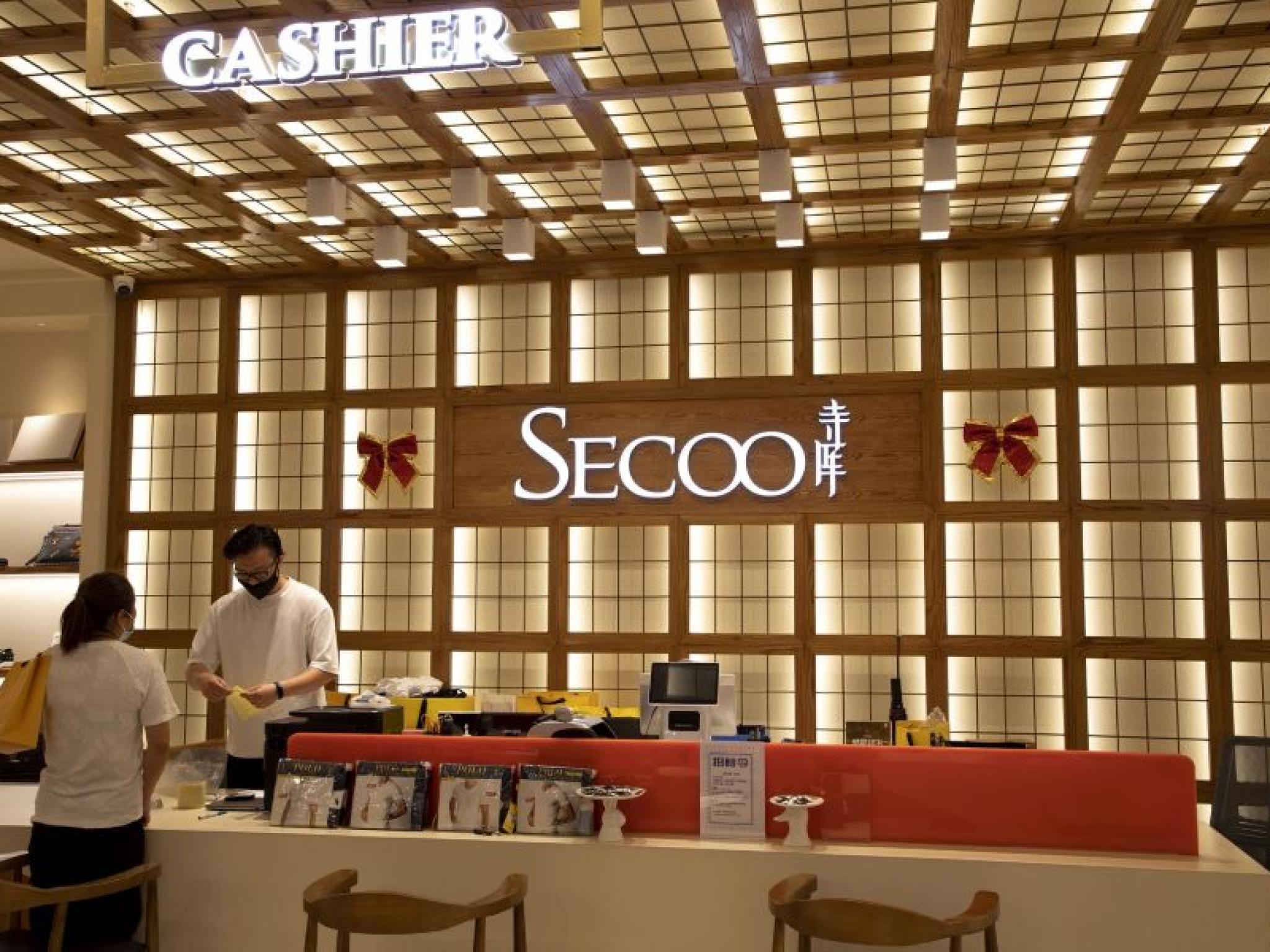
Key Takeaways:
- Online luxury goods reseller Secoo has filed for bankruptcy after its business stumbled under Covid-related disruptions and internal missteps
- Company’s Nasdaq-listed shares now trade at around $0.24, a fraction of the $13 they sold for in better times at its 2017 IPO
By Shirley Lau
Talking big is second nature to many an ambitious Chinese company. But luxury e-commerce platform Secoo Holding Ltd. (NASDAQ:SECO) apparently went a tad too far with its fancy talk of setting up a shop that would “last for more than 109 years.”
The 14-year-old Shanghai-based company is currently struggling just to stay alive, having recently filed for bankruptcy in Beijing. Mind you, it was the second such bankruptcy filing for Secoo this year. The first came in January, though Secoo later withdrew that petition.
Not surprisingly for a company in such distress, Nasdaq-listed Secoo has also faced a litany of problems that have irked everyone from shoppers to suppliers and shareholders.
Covid-induced slowing consumption in China is an obvious culprit behind Secoo’s woes, especially for luxury goods that no doubt saw sluggish demand as many people were confined to their homes to contain outbreaks. But the company’s sorry state of affairs also points to its misguided strategy, as well as the inherent disadvantages of reselling luxury goods online in China.
It wasn’t supposed to happen this way.
Secoo was founded in 2008 by Chinese businessman Li Rixue, who also uses the name Richard. Chinese consumers’ appetite for foreign luxury goods was growing exponentially at the time, giving rise to a strong resale market. From a second-hand handbag shop, Secoo grew to become the country’s biggest luxury e-commerce platform, peddling top brands such as Valentino and Prada. It made its Nasdaq debut in 2017, raising about $140 million and boasting its status as China’s “first luxury e-commerce stock.”
The early days on Wall Street were a luxuriant time for Secoo, whose net profit surged nearly 400%. the year of its listing. A confident Li was once quoted as saying that Alibaba founder Jack Ma “wants Alibaba to last for 102 years, and I want Secoo to last for 109 years.” If these numbers sound odd, that’s because Alibaba was founded in 1999, meaning a 102-year lifespan would stretch to 2101, putting Alibaba in business over three centuries.
But Secoo’s time is best measured now in much smaller units, probably months, if not weeks. The management has not commented on reports of its second bankruptcy filing earlier this month. But it dismissed a local media report that its Beijing office was empty, saying it had merely moved all of its luxury goods to its warehouse.
Secoo was similarly coy when media reported in January that its corporate entity, Beijing Siku Shangmao Co, had filed for bankruptcy with the First Intermediate People’s Court of Beijing Municipality, even as 153 million of its shares were frozen. It retracted the bankruptcy petition on Jan. 6, according to China’s national enterprise bankruptcy information disclosure platform.
No amount of coyness can dispel the concerns of Secoo’s shareholders, who in the past two years have seen the stock move steadily downward before plunging to its all-time low over the last four months. On Thursday the stock closed at just $0.238, a tiny fraction of the $13 price for its September 2017 IPO.
Mired with woes
The spectacular tumble isn’t surprising when one considers all of Secoo’s woes. Earlier this month, it lost a court case in which Prada sought to freeze more than $1.6 million of its assets for a year. But the Italian luxury house, which joined forces with Secoo in June 2019, isn’t alone in such disputes. In the last two years alone, the company has become tangled in hundreds of other sales contract disputes, mostly as the defendant.
So where did things go wrong?
Secoo’s financial reports show that 2019 was its most profitable year, with revenue up 27.5% to about 6.87 billion yuan ($1 billion). But growing competition and shrinking consumption during the pandemic took a toll on the company, causing its revenue to drop 12% in 2020. The figure plunged by nearly half last year to just 3.13 billion yuan, as Secoo’s net loss surged by 547%.
As its business soured, the company missed payments involving tens of millions of yuan to more than 200 suppliers, and was fined for fraudulent advertising and unpaid salaries.
Last May, Secoo was reprimanded by the Nasdaq for failing to file its annual report for the 2020 fiscal year on time. Seven months later, it was warned that it faced potential delisting after its shares traded below the benchmark $1 mark for an extended period.
Not surprisingly, shoppers haven’t been happy with the company either. The number of complaints against Secoo filed with the Chinese consumer rights protection platform Black Cat shot up from 8,800 at the start of this year to over 17,000 by August. Many are about fake goods, failure to deliver orders and failure to provide refunds.
The company has also consistently ranked No. 1 on the online public complaints platform Diansubao since last year in terms of consumer complaints received. With so much discontent, it’s little wonder that Secoo’s active user base and orders have both declined notably, from some 650,000 and 1.75 million, respectively, in the first half of 2020 to about 560,000 and 1.4 million in the same period last year.
Many issues underlie the company’s fall from grace. At the highest level is weak consumption during the pandemic. While Covid has been a boon for many e-commerce companies, pandemic-related international supply chains disruptions have negatively affected Chinese luxury e-commerce companies such as Secoo.
Then there are company-specific problems, led by Secoo’s business strategy that has sometimes been suspect. Its plan to diversify into high-end services such as private jet travel and luxury car rentals, for example, failed to take off due to inadequate offline support. And its introduction of low-priced products such as snacks and hotpot broth was another misstep, blurring the company’s identity as a luxury goods provider.
Luxury e-commerce platforms like Secoo are also at a natural disadvantage to traditional brick-and-mortar outlets in a number of ways. They often lack a price advantage compared to duty-free stores, and luxury brands seldom grant them the rights to sell their products at lower prices than those in traditional outlets over concerns of undermining their brand equity. Keeping counterfeit goods at bay is another challenge.
According to Bain, China is on track to become the world’s largest luxury goods market by 2025. Whether that forecast is overly optimistic or realistic is anyone’s guess, as there’s no end in sight yet for China’s zero-Covid strategy that continues to dampen consumption over a wide range of product areas. But based on its latest woes, Secoo looks unlikely to benefit from any future boom in this lucrative market if and when consumption returns to earlier levels.







